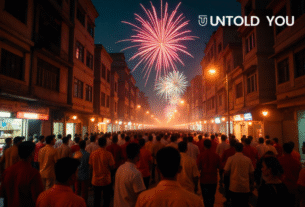Top 10 Indian Folk Art Forms to Discover in 2025
India’s folk and tribal art is a vibrant expression of cultural identity, storytelling, and community life. Passed down through generations, these art forms are rooted in rituals, festivals, nature, and mythology. In 2025, these traditions are gaining global recognition, thanks to digital awareness, exhibitions, and government initiatives.
Here are the Top 10 Indian folk art forms that you must explore to truly appreciate the country’s cultural wealth.
1. Madhubani (Mithila) – Bihar
Medium: Natural dyes and pigments on cloth, canvas, or walls
Themes: Hindu deities, nature, festivals
Distinctive Feature: Intricate borders, symbolic motifs, no blank spaces
Learn More: Crafts Council of India
Best For: Home decor, storytelling art collectors
2. Warli – Maharashtra
Creators: Warli tribe from Palghar region
Technique: White pigment on mud walls, now adapted to canvas
Subjects: Rural life, farming, rituals, tribal dances
Why It Stands Out: Minimalist figures with geometric shapes
Cultural Link: INTACH Warli Promotion
3. Pattachitra – Odisha & West Bengal
Meaning: “Patta” (cloth) + “Chitra” (painting)
Focus: Stories of Lord Jagannath, Krishna, and mythological epics
Medium: Palm leaves, cotton cloth with natural colors
Authentic Work: Raghurajpur Artists Village – Odisha Tourism
Fun Fact: Artists often double as performers and storytellers
4. Phad Painting – Rajasthan
Canvas: Scrolls carried by traditional Bhopas (priest-singers)
Themes: Stories of folk deities like Pabuji and Devnarayan
Style: Long horizontal narrative paintings
Explore More: Shilpgram Udaipur – Folk Art Hub
Modern Revival: Painted on jackets, homeware, and textiles
5. Gond Art – Madhya Pradesh
Artists: Gondi tribe
Technique: Dots, lines, and vibrant color palettes
Subjects: Animals, trees, and cosmic elements inspired by folklore
Famous Artist: Jangarh Singh Shyam
Resources: Indira Gandhi National Centre for the Arts – IGNCA
6. Kalamkari – Andhra Pradesh & Telangana
Medium: Hand-painted or block-printed cotton fabric
Types: Machilipatnam (block print), Srikalahasti (freehand)
Themes: Ramayana, Mahabharata, Persian motifs
Cultural Tip: Often used in temple art and saree designs
Government Link: AP Handicrafts
7. Kalighat Painting – West Bengal
Origin: 19th-century Kolkata, near Kalighat Temple
Subjects: Gods, goddesses, satirical takes on society
Style: Bold outlines, flat colors, expressive faces
Modern Use: Greeting cards, wall art
Read More: Victoria Memorial Museum Kolkata
8. Cheriyal Scroll Painting – Telangana
Medium: Handmade paper scrolls with bright natural pigments
Tradition: Storytelling by nakashis (folk artists)
Themes: Epics, folklore, daily village life
Protected Under: GI (Geographical Indication) tag
Explore: Telangana Tourism
9. Bhitti Chitra (Wall Paintings) – Odisha
Locations: Temples like Lingaraj and Jagannath
Features: Lime-painted murals depicting Jagannath culture and rituals
Medium: Natural stone-based colors on temple walls
Tip: Combine a visit with Ratha Yatra in Puri for full cultural immersion
Documentation: Indian Heritage Portal
10. Tanjore (Thanjavur) Painting – Tamil Nadu
Style: Richly decorated religious paintings, often using gold foil
Figures: Mythological and religious icons, especially Hindu gods
Base: Wooden planks or canvas
Museum Highlight: Thanjavur Art Gallery
Ideal For: Sacred art enthusiasts and luxury decor lovers
Why These Art Forms Matter in 2025
- Cultural Preservation: They document indigenous ways of life
- Economic Upliftment: Many tribal communities rely on art for livelihood
- Sustainability: Use of natural materials and dyes
- Digital Revival: Online galleries and e-commerce are increasing visibility
Where to Buy or Support
Supporting Indian folk artists helps keep their skills alive and traditions relevant in the modern world.
Conclusion
India’s folk art is more than just aesthetic—it’s a cultural inheritance that speaks of devotion, nature, community, and storytelling. As we move further into 2025, these traditions offer not just nostalgia but a way to reconnect with authentic, rooted creativity.
For more cultural deep-dives, artisan features, and traditional India insights, visit Untold You—where heritage meets the modern world.




